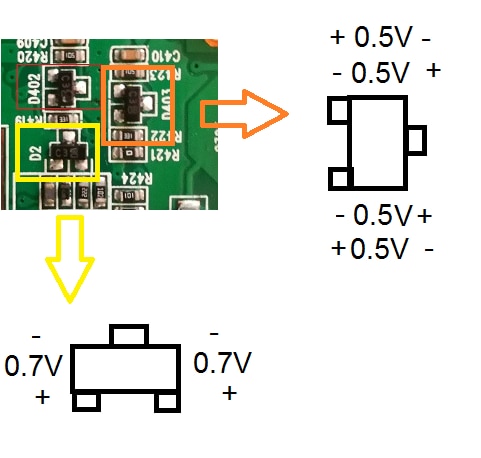Hello,
I'm trying to repair my nissan car radio model: Clarion BTS33
The problem began when the fuel volumen line of my car shortcircuited with 12V. As soon as that happened my radio turned off and never came back again. I sent the radio with some folks to repair it, they replaced some ICs that were burned out but they couldn't replace one specific diode.
Right now, when I plug the radio into my car only the screen shows up but it prints nothing. Just a blank orange screen. No audio output no matter what buttons I press.
I found the cable on Amazon: https://www.amazon.com/20-pin-Subaru-Headunit-Harness-Steering/dp/B01D9K3L44
I also found the user manual of the radio: https://fccid.io/2ABGYBTS33-CLARION/User-Manual/User-guide-2150158
The only component that looks burned out is the diode D402. The diode is the same as de diode D403 so I can see the marking is "C308" the 08 is fllipped to the right 90 degress.
My plan is to replace the diode but I haven't been able to find a datasheet.
I've attached images of the radio and the circuit board. Any help would be appreciated.
Thanks!





